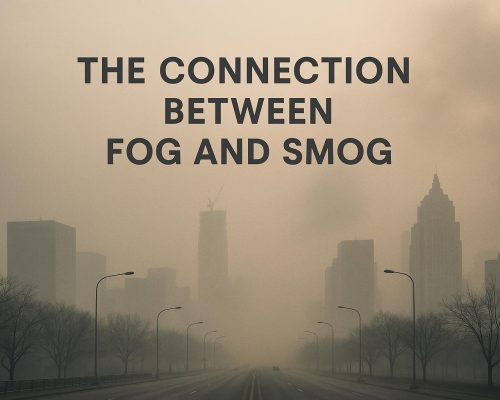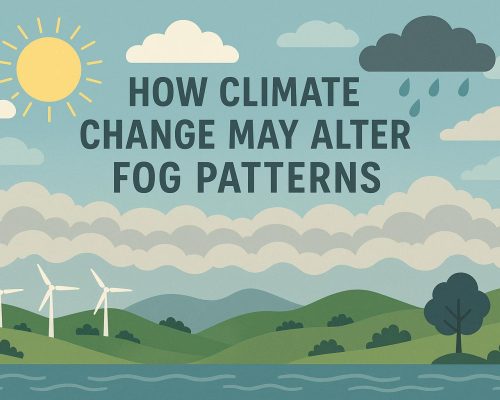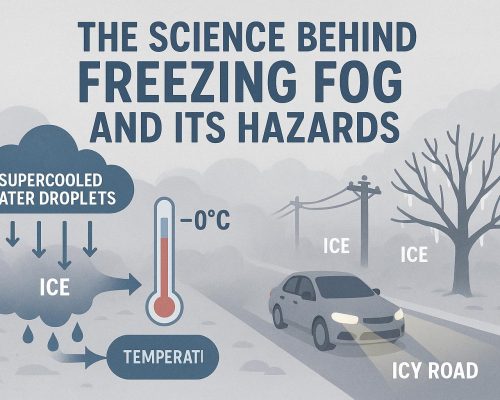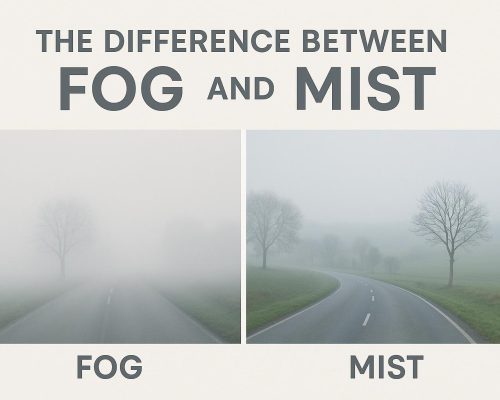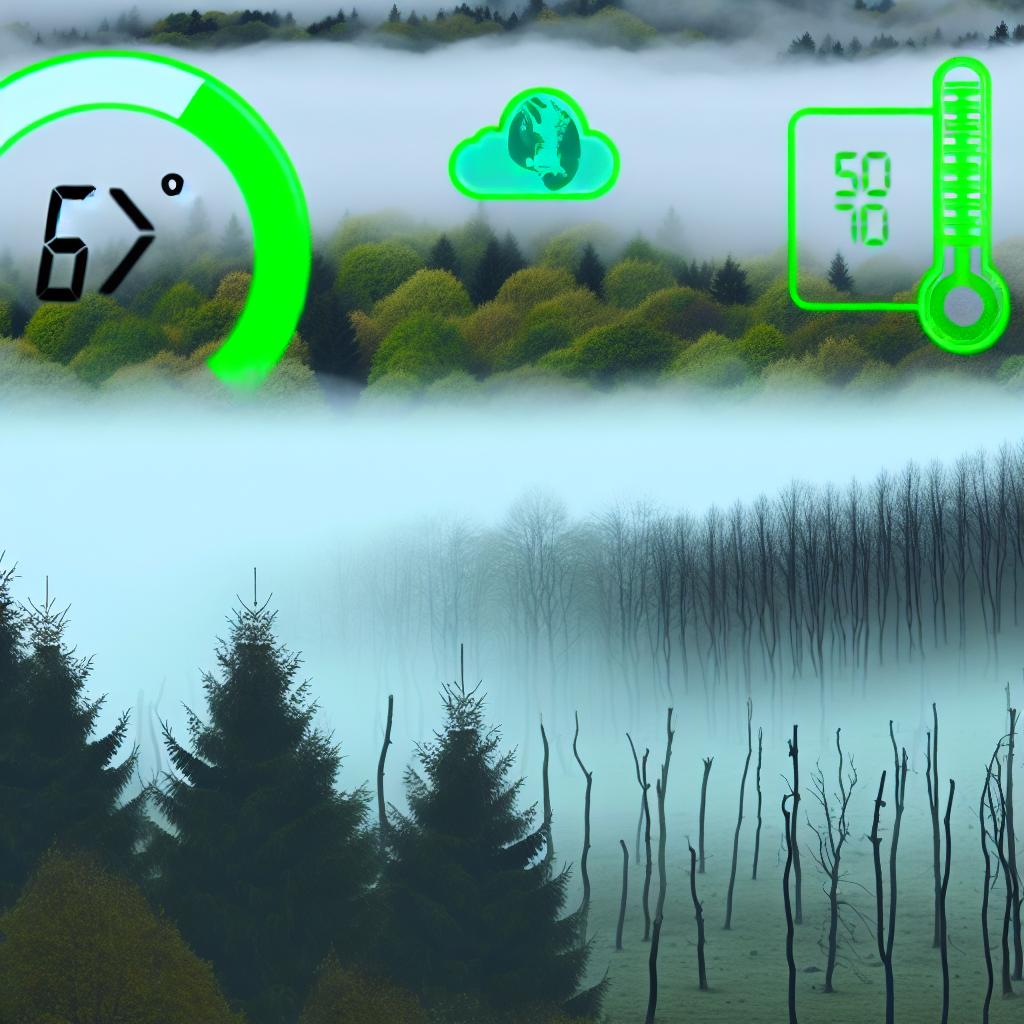
The Connection Between Fog and Climate Change
Understanding Fog
Fog is a meteorological phenomenon characterized by the suspension of tiny water droplets or ice crystals in the air near the Earth’s surface. Its occurrence is primarily a result of moist, warm air encountering cooler surfaces, leading to condensation. Several geographic and atmospheric factors can influence the presence and behavior of fog, including proximity to water bodies, prevailing winds, and local topography. This article seeks to delve deeper into the formation of fog, its potential changes in a shifting climate, and the broader implications for ecosystems.
Fog Formation
Understanding the processes that lead to the formation of fog is essential for appreciating its role in the atmosphere. There are two primary mechanisms through which fog is formed: radiation fog and advection fog.
Radiation fog is most commonly observed at night or during the early morning hours. After sunset, the Earth’s surface loses heat and cools down. When the surface temperature drops to the dew point, water vapor begins to condense, forming fog. Radiation fog is a frequent occurrence in inland areas and valleys where clear skies and calm winds allow for significant temperature drops.
Advection fog arises when moist air moves over a cooler surface, prompting condensation. This form of fog commonly appears in coastal areas. Sea breezes, which are moist and laden with water vapor, often pass over cooler land or sea surfaces. The interaction between the moist air and the cooler ground initiates the condensation process, leading to the formation of advection fog.
Each of these fog types is influenced by local weather conditions and topographical features, but both share the fundamental principle of air at or near saturation coming into contact with a cooler surface, causing moisture in the air to condense into small droplets or crystals.
Fog in a Changing Climate
The phenomenon of fog does not occur in isolation but is instead intertwined with the broader global climate. As the climate undergoes changes, fog events’ frequency, distribution, and intensity are also subject to alteration. These changes are intricately linked to variations in temperature, humidity, atmospheric pressure, and other climatic factors driven by global warming. Ongoing shifts in climate require a thorough understanding of how fog patterns might change and the implications these changes carry.
Temperature and Fog
One of the primary ways that climate change impacts fog is through temperature variations. Rising global temperatures can have a range of effects, depending on the location and prevalent fog types. In areas where radiation fog is common, higher temperatures can lead to a decrease in fog occurrence. This is because warmer conditions at night result in less cooling of the Earth’s surface, thereby reducing the likelihood of reaching the dew point and forming fog.
Conversely, an increase in atmospheric moisture could mean that some regions might experience more frequent or denser fog events. In these cases, the heightened level of moisture compensates for the reduced surface cooling, sustaining fog formation under warming conditions.
Fog and Ecosystems
Fog has long held ecological significance, providing a key source of moisture in certain habitats. For many ecosystems, particularly coastal forests and deserts, fog is an essential water supply, sustaining plant and animal life. Changes in fog patterns threaten these ecosystems by potentially altering the delicate balance of moisture availability.
Altered fog regimes could pose challenges to species whose survival strategies rely on consistent fog inputs. These plants and animals may find it difficult to adapt quickly to changes, leading to shifts in species composition and ecosystem function. Thus, understanding and monitoring fog trends become crucial for preserving sensitive and dependent ecosystems.
Fog’s Role in Carbon Sequestration
Besides its ecological importance, fog also plays a pivotal role in the process of carbon sequestration, particularly in coastal ecosystems. Studies have shown that fog can significantly enhance the growth rate and carbon storage capacity of forests. The additional moisture and nutrients provided by fog boost forest productivity, allowing for greater carbon capture and storage.
As global climate patterns shift, any changes to fog regimes could also impact how these ecosystems sequester carbon, influencing the global carbon cycle. Variations in fog presence could, therefore, have broader implications for climate change mitigation efforts.
Conclusion
The intricate relationship between fog and climate change highlights the complexity of Earth’s climatic systems. While some regions may witness reduced fog due to temperature increases, other areas may experience increased occurrences driven by heightened atmospheric humidity. A comprehensive understanding of fog dynamics is crucial for predicting future climate scenarios and informing ecosystem management strategies. As research continues, these insights will be instrumental in making informed decisions about conservation efforts and environmental policies. Recognizing the multifaceted effects of climate change on fog and its ecological and climatic roles underscores the importance of continued study and monitoring of this atmospheric phenomenon.

